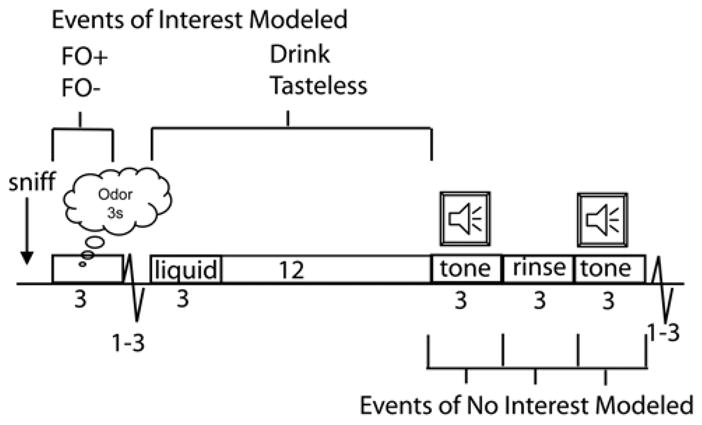Figure 1. Paradigm.

Cartoon of study design. Timeline of stimulus presentation with events of interest indicated above and events of no interest indicated below. One half second into the trial the subject hears the word “sniff” instructing them to sniff the odor about to be delivered. The odor is delivered for 3 seconds while the subject sniffs. Odors are either the fruit odor predicting its drink (FO+) or the fruit odor predicting a tasteless solution (FO−). These are modeled as 3 second mini blocks. One to three seconds following termination of odor delivery a liquid is delivered (0.5cc over 3 seconds). The liquid is either a fruity drink or a tasteless solution. Fruity drinks and tasteless events are modeled as mini blocks extending from the moment of stimulus onset until the onset of the swallow tone 15 seconds later (i.e. 15-sec mini block). The swallow tone plays for 3 seconds, during which time the subject knows they are allowed to swallow. Immediately after the tone a 0.5cc bolus of tasteless solution is delivered as a rinse. This is immediately followed by a second swallow tone instructing subjects to swallow the rinse. These events are modeled as 3 separate events of no interest. A 1 to 3 second jitter of rest follows the onset of the next trial.
